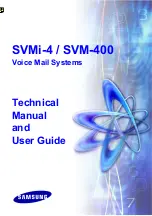IMPORTANT SAFETY INSTRUCTIONS
IMPORTANT SAFETY INSTRUCTIONS
CAUTION
• The use of accessories, transducers, and cables other than those specified by the manufacturer, may
result in increased emissions or decreased immunity of the table.
• The table should not be used adjacent to or stacked with other equipment. If adjacent or stacked use
is necessary, the table should be observed to verify normal operation in the configuration in which it
will be used.
• The table is designed to be a stand-alone table. This table must not be modified or incorporated into
any other equipment.
• Proper operation of this equipment is very important for the safety of the operator, client, and any
other individuals in the area of this equipment. Directions for use of this equipment are described in
this manual. The operator should read these sections carefully.
• Weight Limit: (client and accessories) 500 lbs. (227 kg.) Do not exceed.
• Adjustable Breast Comfort (ABC) System Weight Limit: 100 lbs. (45 kg.)
• Do not sit on the ABC System. Only use the ABC System as intended. Do not place foreign objects into
the ABC System. For safety of your client, use a cloth sheet between the ABC System and your client.
• Be certain that the table is completely lowered without any tilt being present prior to discharging an
ambulatory client. The client may lose balance and fall.
• When lowering the table, make sure there is nothing underneath the tabletop that can impede motion
(like stools, cabinets, accessory parts, cleaners, etc.) When using the table Height Up function, do not
place anything between the metal frame and the base structure. Damage can occur to the table.
• Do not sit on backrest or footrest sections.
• Before moving any of the tables, disconnect the power cord from the power outlet.
• The table weighs as much as 475 lbs. (216 kg.)
• Do not lift table by the tabletop pad. This can damage the removable pad. Use extreme caution when
lifting the table to move it. 4 people are required to move the table safely.
• Do not use the table to transport a client.
3
ENTRAPMENT
• Risk of Injury - The picture below indicate areas of entrapment that can occur when operating this equip-
ment. It is the responsibility of the operator to ensure that bystanders are not in or around these areas
during operation.


















